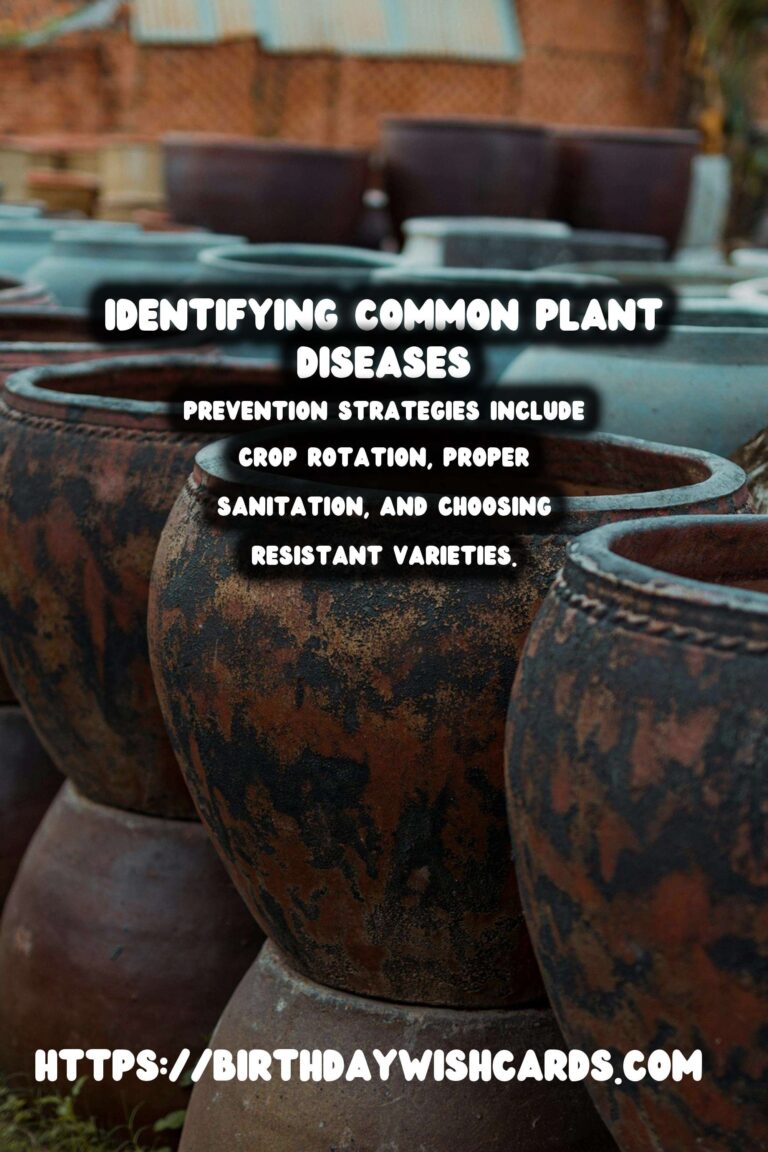
Plants are vital to our ecosystem and play a crucial role in our everyday lives. However, like any other living organism, they are susceptible to diseases that can affect their growth and productivity. Understanding plant diseases and being able to identify common issues early can help in managing and preventing significant damage.
What Are Plant Diseases?
Plant diseases are abnormal conditions that negatively affect a plant’s structure or function. They are caused by pathogens such as fungi, bacteria, viruses, or environmental factors. These diseases can lead to reduced yield, stunted growth, or even plant death.
Common Types of Plant Diseases
Fungal Diseases
Fungi are the most common cause of plant diseases. They spread through spores that can be carried by wind, water, or soil. Some common fungal diseases include powdery mildew, rust, and root rot.
Bacterial Diseases
Bacterial diseases are often spread by insects, contaminated tools, or water. These can cause symptoms such as wilting, leaf spots, and cankers. Examples include bacterial blight and bacterial wilt.
Viral Diseases
Viruses are often transmitted by insects like aphids or through infected seeds. They can cause mosaic patterns on leaves, stunted growth, and fruit deformities. Some well-known viral diseases are the tobacco mosaic virus and tomato spotted wilt virus.
Identifying Plant Diseases
Identifying plant diseases involves observing the symptoms and signs on the plant. Symptoms are visible changes in the plant, such as yellowing of leaves or wilting. Signs are physical evidence of the pathogen, like fungal spores or bacterial ooze.
Visual Inspection
Regularly inspect your plants for any unusual changes. Look for discoloration, spots, or growth abnormalities. Early detection is key to managing plant diseases effectively.
Laboratory Testing
In some cases, laboratory testing may be necessary to accurately identify the pathogen causing the disease. This can involve sending samples to a plant diagnostic lab.
Preventing Plant Diseases
Prevention is often more effective than treatment. Here are some strategies to prevent plant diseases:
Crop Rotation
Rotating crops can help break the life cycle of pathogens and reduce disease incidence.
Proper Sanitation
Regularly clean tools and equipment to prevent the spread of pathogens. Remove and dispose of infected plant material promptly.
Choosing Resistant Varieties
Opt for plant varieties that are resistant to common diseases in your area.
Conclusion
Understanding and identifying plant diseases is essential for maintaining healthy plants and maximizing their growth potential. By being vigilant and employing preventive measures, you can protect your plants from common diseases and ensure a thriving garden.
Plants are susceptible to diseases that can affect their growth and productivity. Plant diseases are caused by pathogens such as fungi, bacteria, and viruses. Fungal diseases are the most common and spread through spores. Identifying plant diseases involves observing symptoms and signs on the plant. Prevention strategies include crop rotation, proper sanitation, and choosing resistant varieties. 
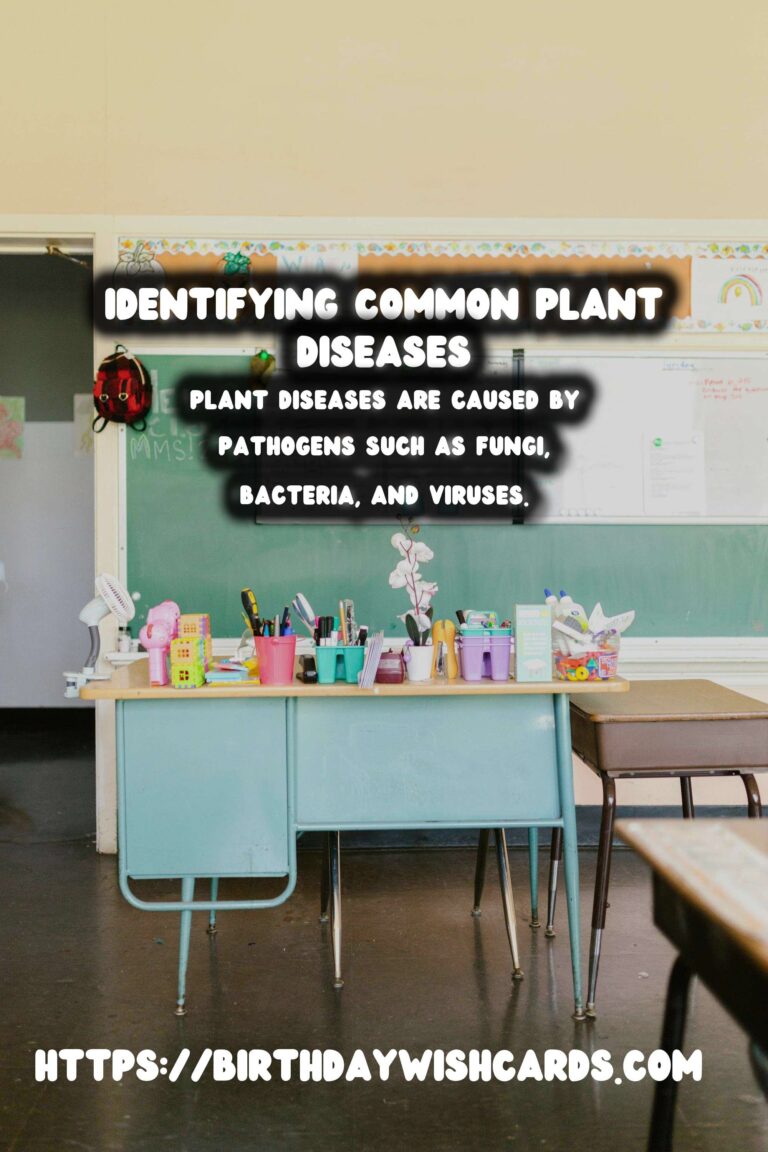


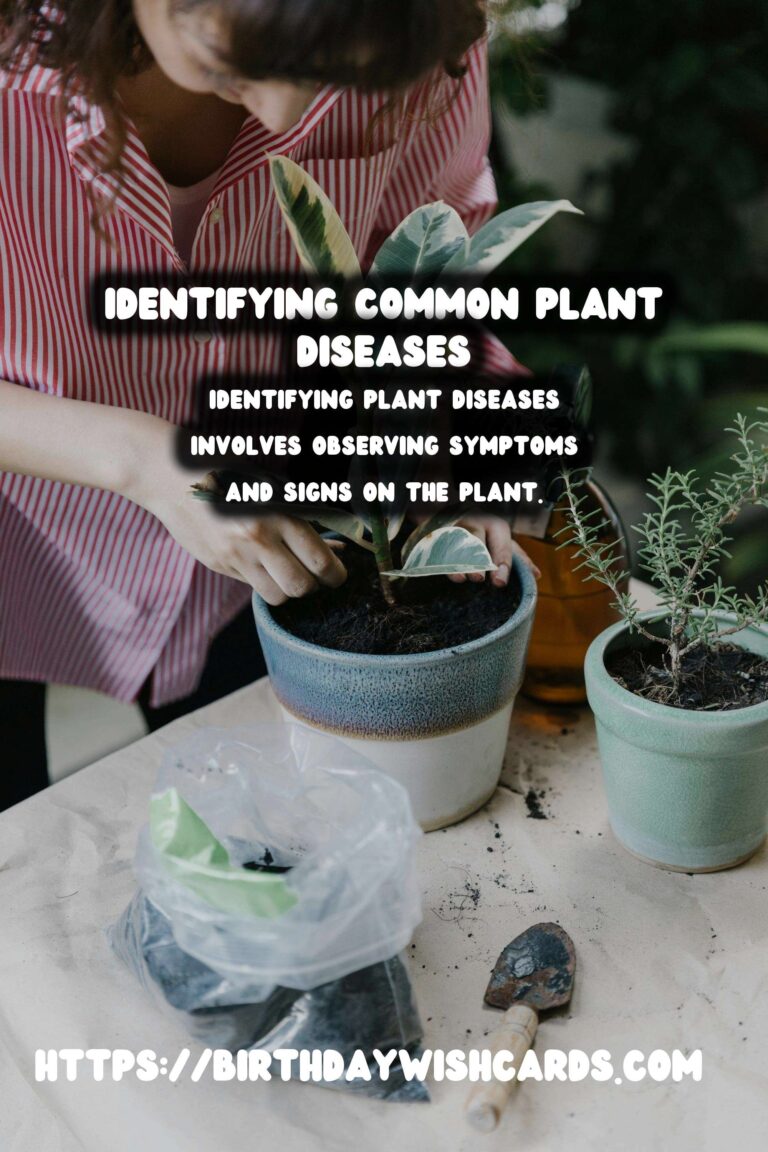
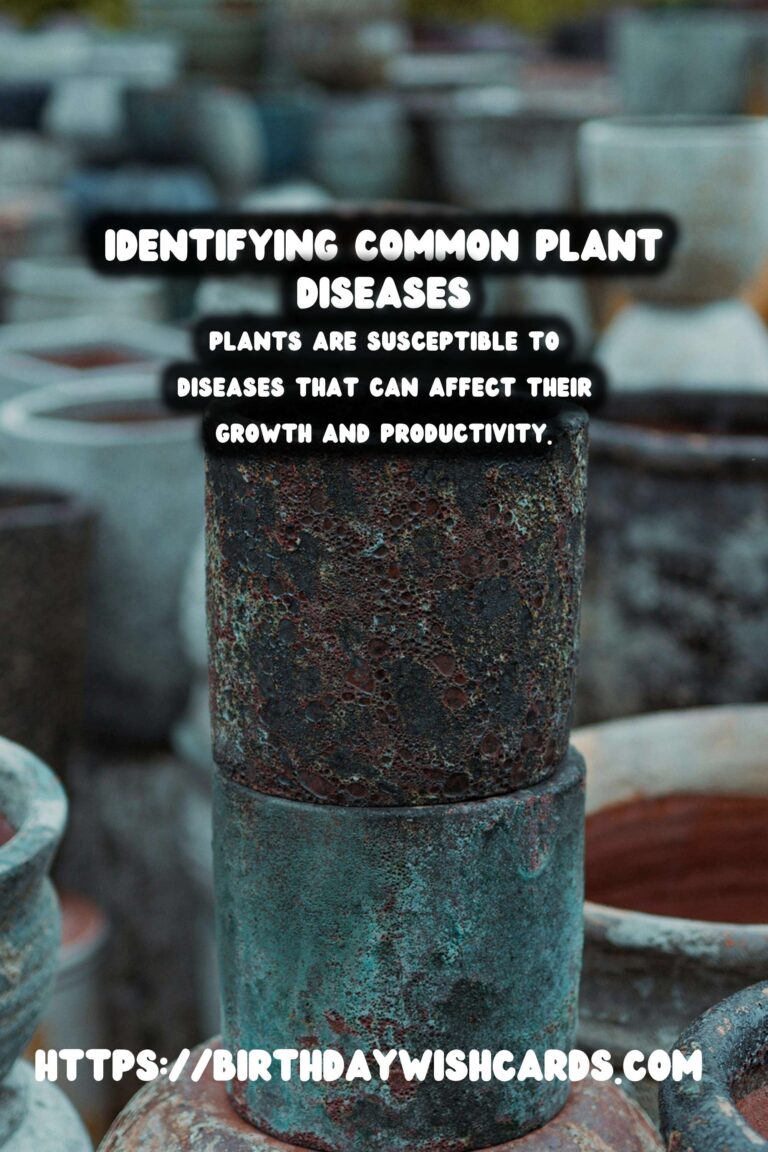
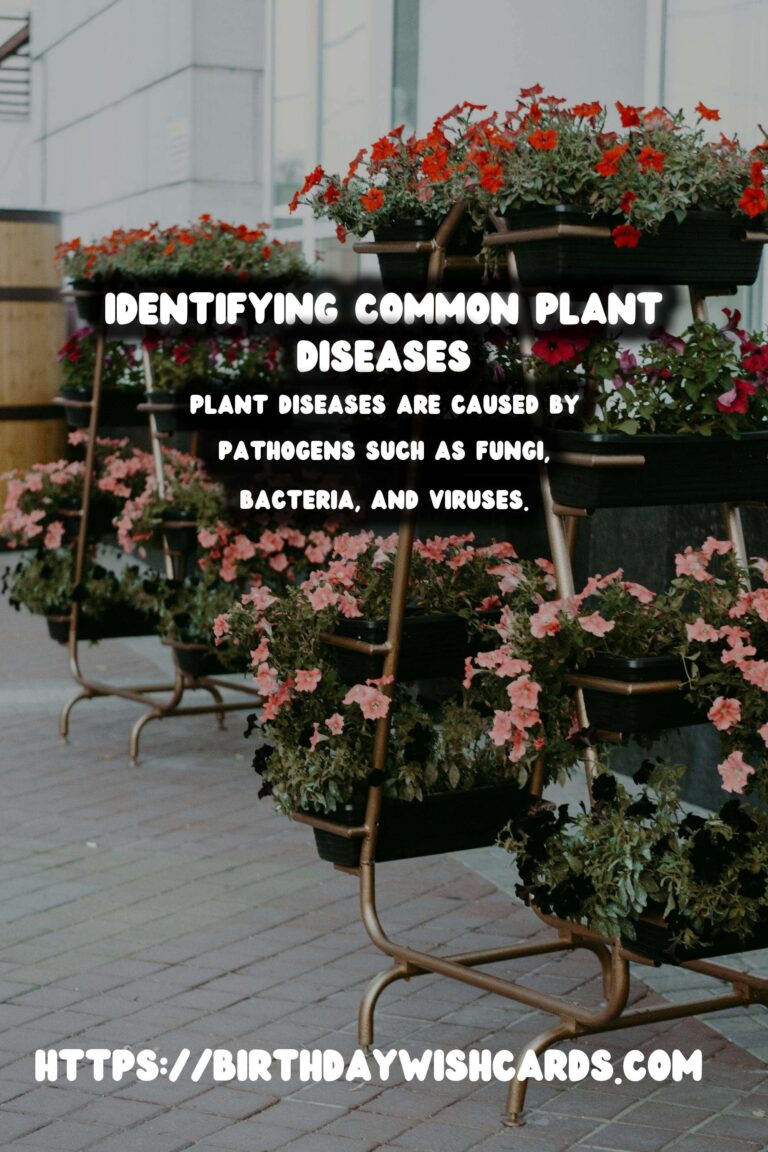
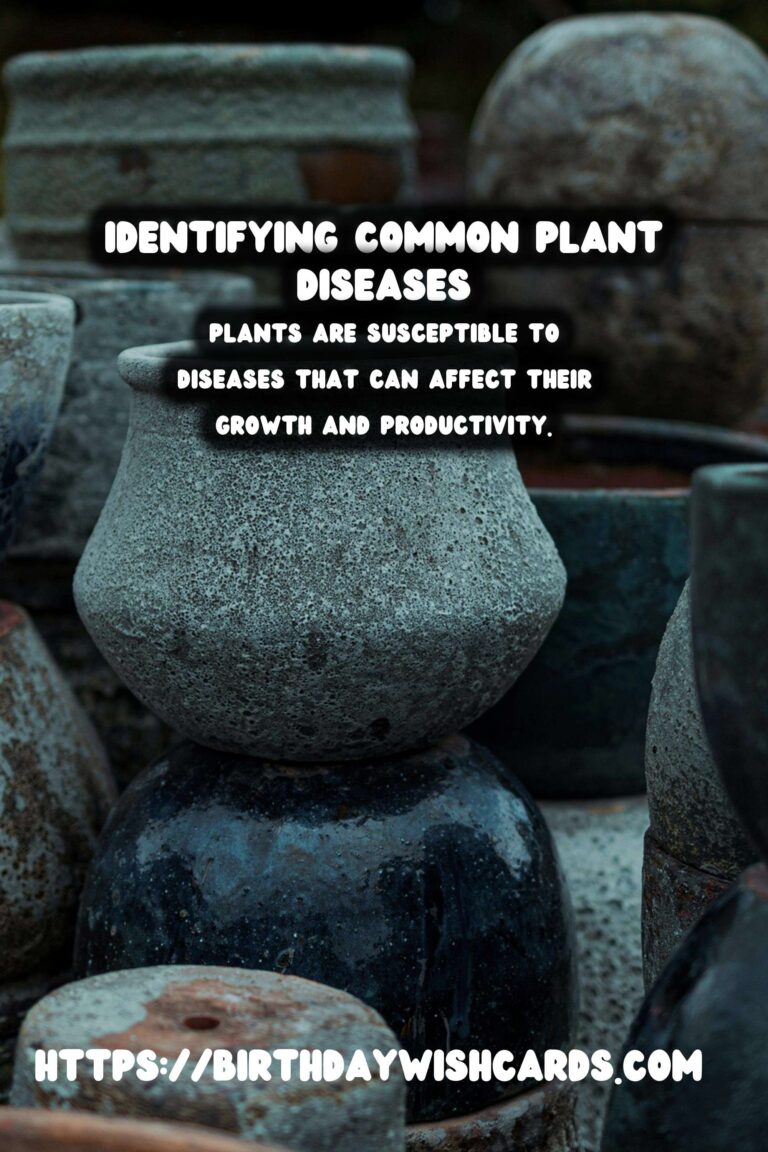
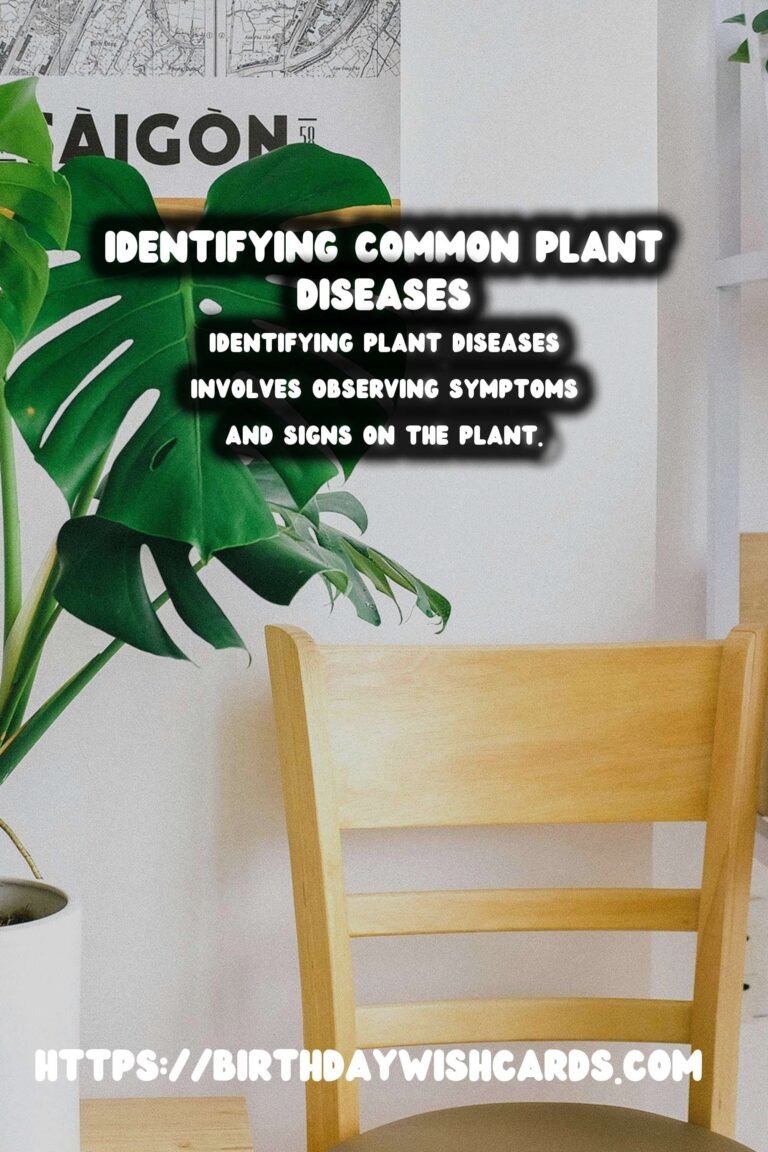

#PlantDiseases #Gardening #PlantCare #Horticulture #PlantHealth




